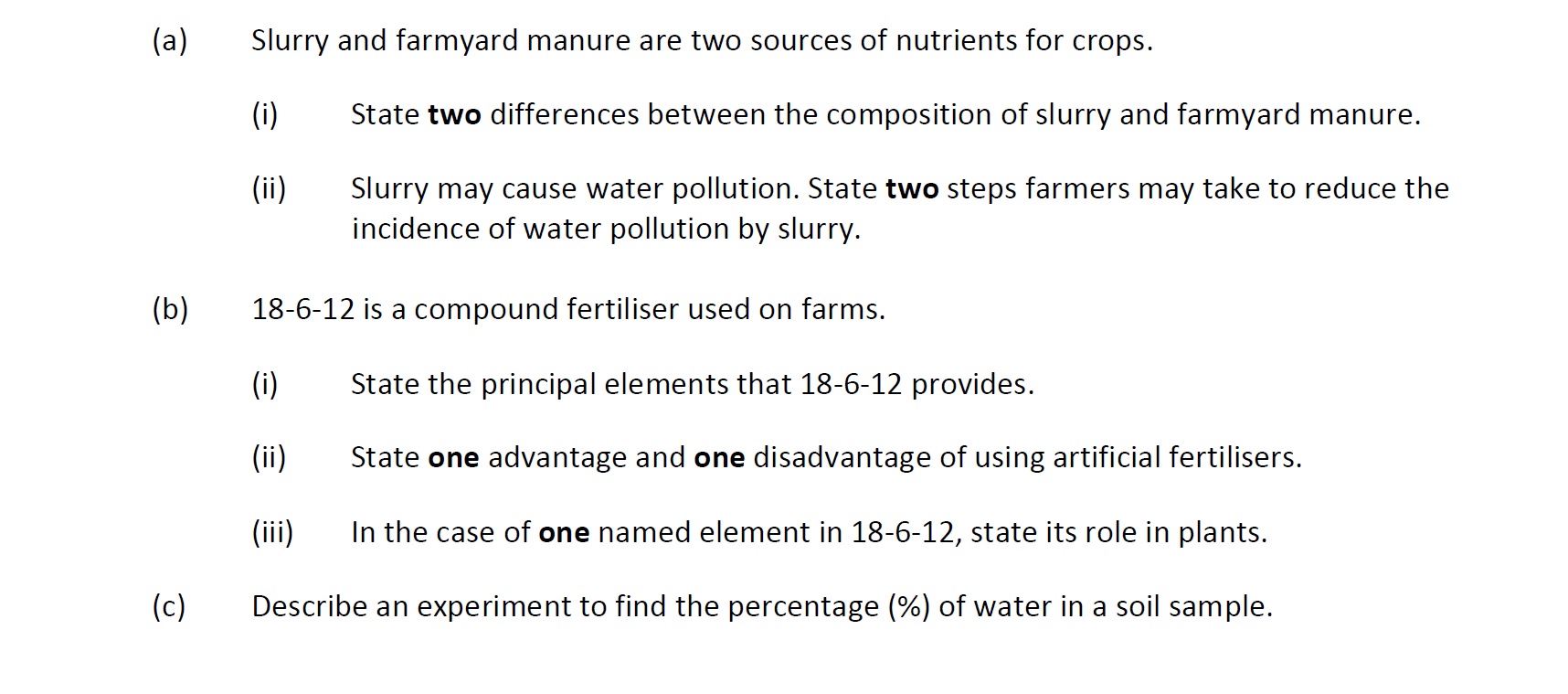Photo AI
Slurry and farmyard manure are two sources of nutrients for crops - Leaving Cert Agricultural Science - Question a - 2018
Question a

Slurry and farmyard manure are two sources of nutrients for crops. (i) State two differences between the composition of slurry and farmyard manure. (ii) Slurry may... show full transcript
Worked Solution & Example Answer:Slurry and farmyard manure are two sources of nutrients for crops - Leaving Cert Agricultural Science - Question a - 2018
Step 1
State two differences between the composition of slurry and farmyard manure.
Answer
- Water Content: Slurry contains more water compared to farmyard manure, which has less water content.
- Organic Matter: Farmyard manure is rich in organic matter, while slurry is relatively low in organic matter.
Step 2
State two steps farmers may take to reduce the incidence of water pollution by slurry.
Answer
- Farmers should avoid spreading slurry during wet weather to prevent runoff into water sources.
- They can store slurry in leak-proof tanks and use an injection system for application to minimize contact with surface water.
Step 3
Step 4
State one advantage and one disadvantage of using artificial fertilisers.
Answer
Advantage: Artificial fertilisers are specially formulated to meet the nutrient needs of crops, allowing for increased efficiency in crop growth. Disadvantage: Overuse of artificial fertilisers can harm the soil structure and lead to nutrient runoff, causing environmental harm.
Step 5
Step 6
Describe an experiment to find the percentage (%) of water in a soil sample.
Answer
-
Equipment Setup: Gather a balance, a dry container, and a fresh soil sample.
-
Initial Weighing: Weigh the dry container and record its mass.
-
Soil Addition: Place the fresh soil sample in the container and reweigh it to get the combined mass.
-
Drying Process: Heat the container with the soil in an oven until all the moisture evaporates, then allow it to cool.
-
Final Weighing: Weigh the container with the dried soil and record this mass.
-
Calculation: Calculate the mass of water lost using the formula:
Then, calculate the percentage of water in the soil sample using the formula:
ext{Percentage of water} = rac{ ext{mass of water}}{ ext{mass of fresh soil}} imes 100
